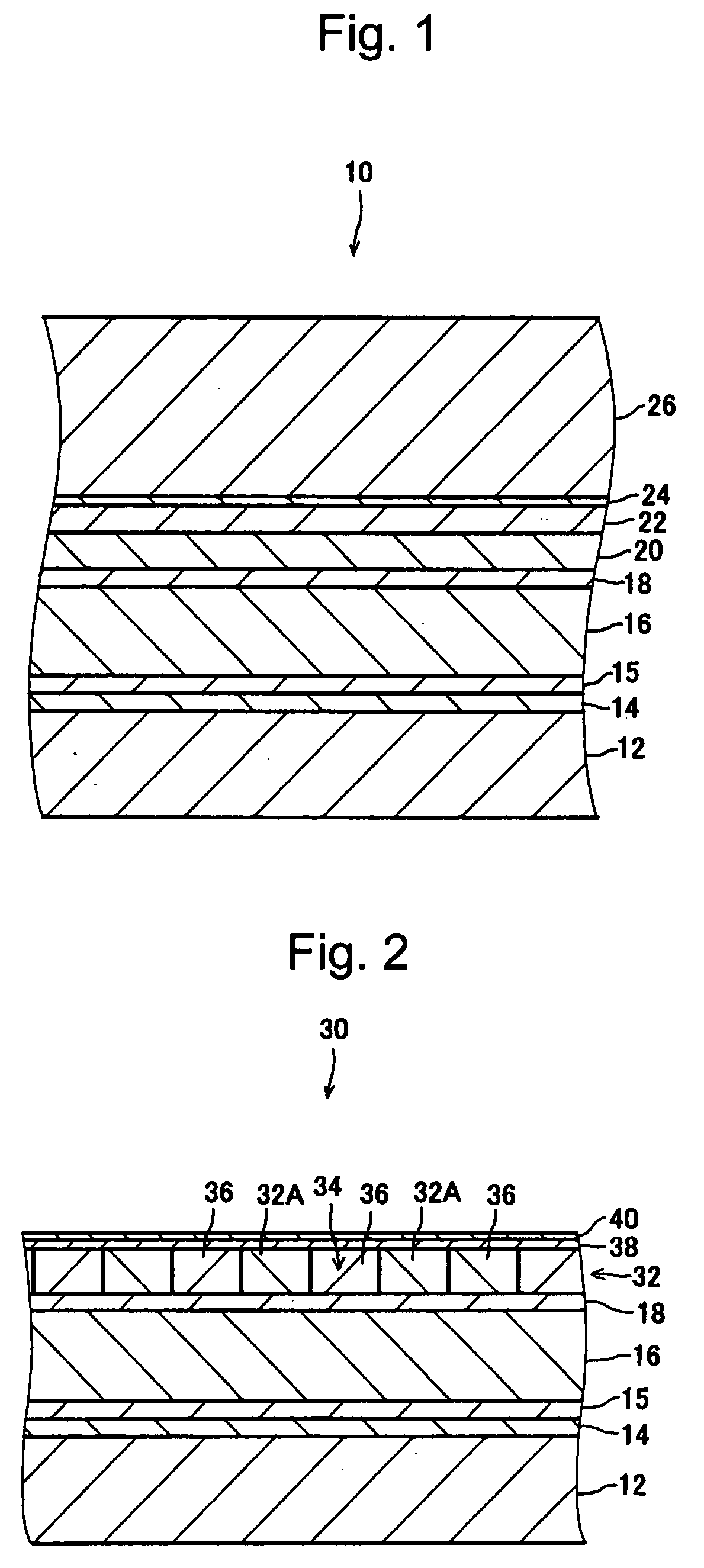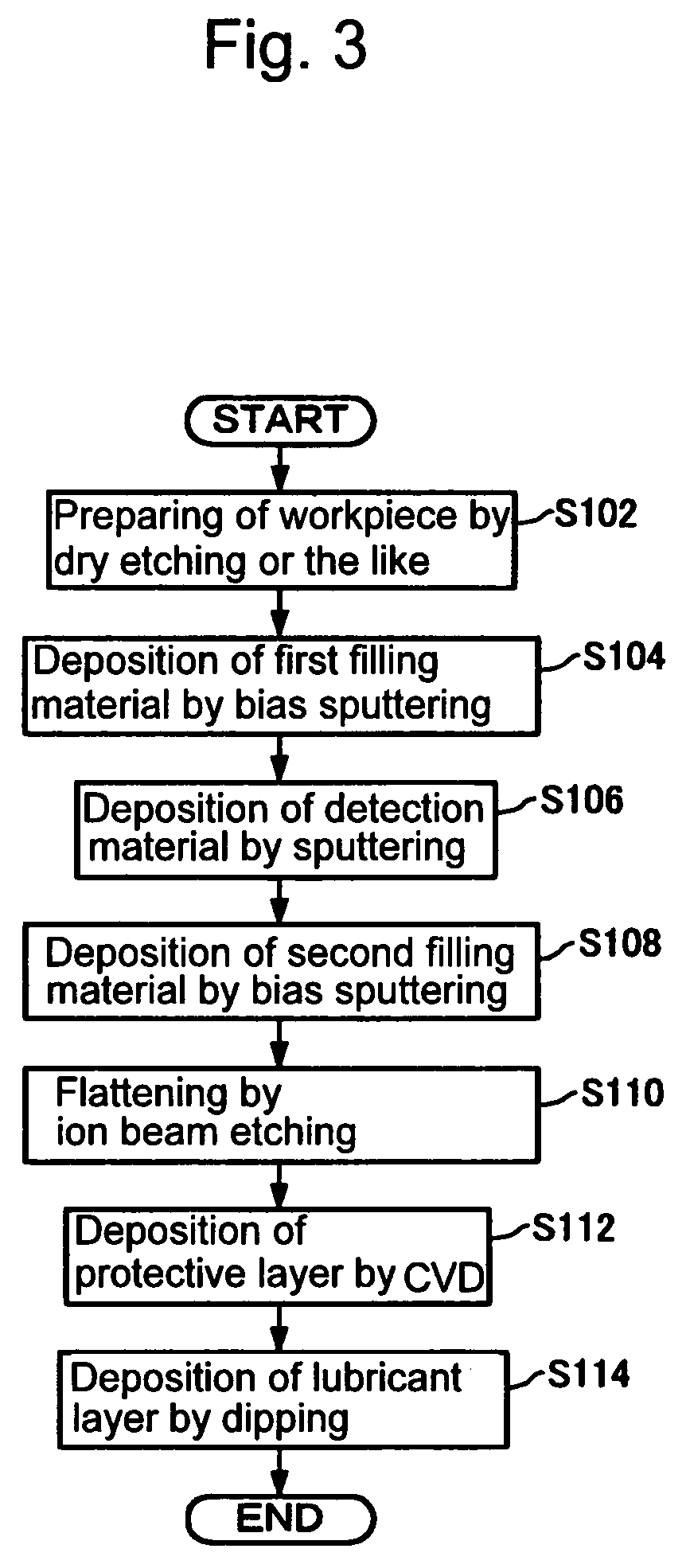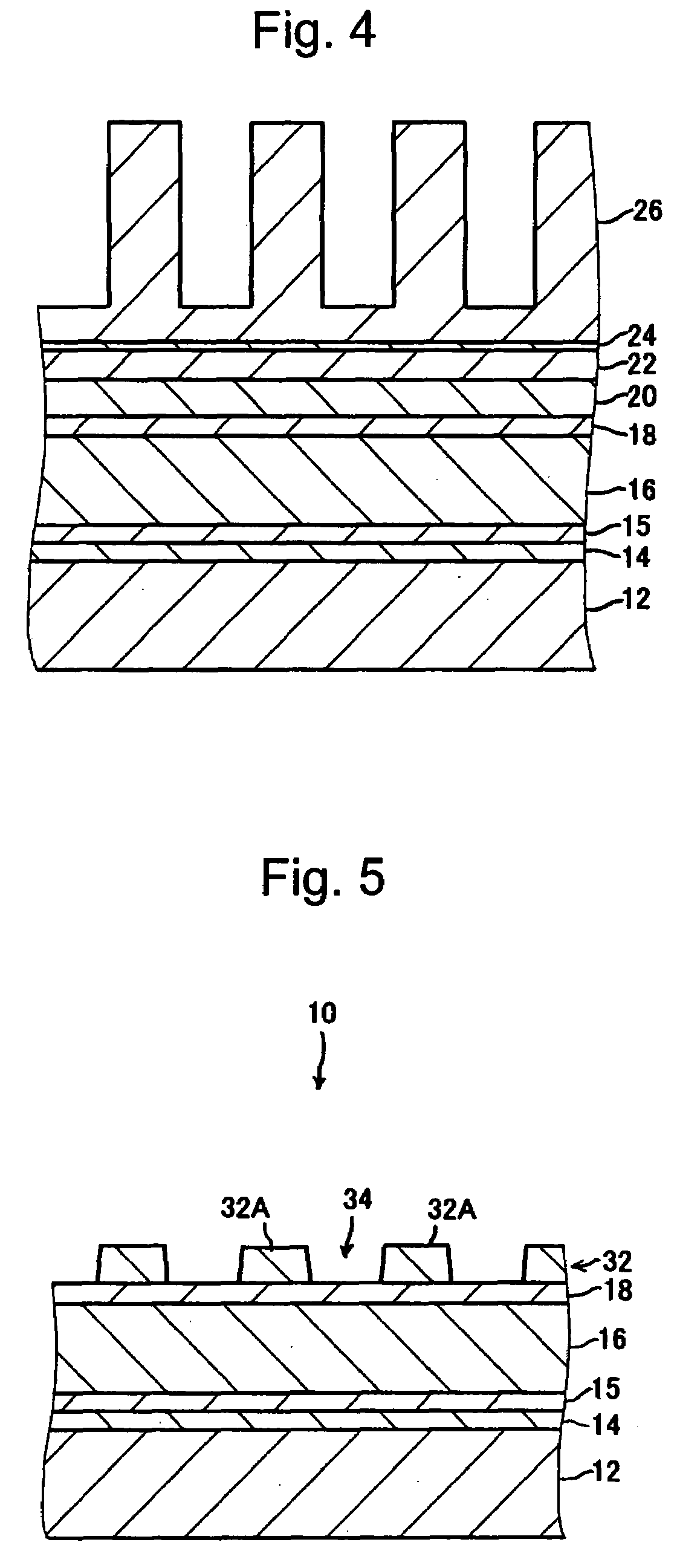Method for manufacturing magnetic recording medium
a technology of magnetic recording medium and manufacturing method, which is applied in the field of manufacturing a magnetic recording medium, can solve the problems of erroneous recording information, limited accuracy of microprocessing of magnetic heads, and conventional approaches to improve the density of areal cells already reaching their limits, and achieve good recording/reproducing properties
- Summary
- Abstract
- Description
- Claims
- Application Information
AI Technical Summary
Benefits of technology
Problems solved by technology
Method used
Image
Examples
working example 1
[0103]In accordance with the aforementioned first and second exemplary embodiments, nine types of samples A to J were prepared, ten pieces for each type. More specifically, ninety workpieces 10 were first prepared which had a substrate 12 of a diameter of 48 mm and a recording layer 32 with the following concavo-convex patterns.
[0104]Track pitch: 150 nm
[0105]Width of the convex portion: 90 nm
[0106]Width of the concave portion: 60 nm
[0107]Step height of concavo-convex pattern (the depth of the concave portion 34): 18 nm
[0108]Range of the concavo-convex pattern formed: within the radii of 16 to 18 mm from the center
[0109]Then, by bias sputtering, the first filling material 36 was deposited on the recording layer 32 of the workpiece 10 in a thickness greater than the depth of the concave portion 34 to thereby fully fill the concave portion 34 with the first filling material 36. The bias sputtering was carried out under the following conditions. Note that the first filling material 36 w...
working example 2
[0132]In accordance with the third exemplary embodiment described above, ten samples of one type (K) were prepared. Note that the concavo-convex pattern of the recording layer 32 over the workpiece 10 was the same as that of A to J according to the aforementioned Working Example 1. Furthermore, there are many points in the manufacturing conditions that were common to those of A to J according to the aforementioned Working Example 1, and those common points will not be repeatedly explained.
[0133]Ten workpieces 10 having the concavo-convex patterned recording layer 32 were prepared, and the first filling material 36 was deposited on the recording layer 32 of these workpieces 10 in a thickness less than the depth of the concave portions 34. More specifically, the first filling material 36 was deposited in a thickness of 2 nm (the thickness of the first filling material 36 in the concave portion 34).
[0134]Then, by sputtering, the detection material 44 was deposited on the first filling ...
working example 3
[0139]In contrast to E of the aforementioned Working Example 1, ten samples of one type (L) were prepared which employed a different concavo-convex pattern for the recording layer 32. More specifically, the samples prepared were provided with a recording layer 32 which had the following concavo-convex pattern with the recording elements 32A wider than those of E according to Working Example 1.
[0140]Track pitch: 300 nm
[0141]Width of the convex portion: 180 nm
[0142]Width of the concave portion: 120 nm
[0143]Step height of concavo-convex pattern (the depth of the concave portion 34): 18 nm
[0144]Range of the concavo-convex pattern formed: within the radii of 16 to 18 mm from the center
[0145]Note that the other conditions were the same as those of E according to the aforementioned Working Example 1.
[0146]After the flattening process, by AFM, the step height between the top surface of the recording element 32A and the top surface of the first filling material 36 filling the concave portion...
PUM
| Property | Measurement | Unit |
|---|---|---|
| Time | aaaaa | aaaaa |
| Time | aaaaa | aaaaa |
| Time | aaaaa | aaaaa |
Abstract
Description
Claims
Application Information
 Login to View More
Login to View More - R&D
- Intellectual Property
- Life Sciences
- Materials
- Tech Scout
- Unparalleled Data Quality
- Higher Quality Content
- 60% Fewer Hallucinations
Browse by: Latest US Patents, China's latest patents, Technical Efficacy Thesaurus, Application Domain, Technology Topic, Popular Technical Reports.
© 2025 PatSnap. All rights reserved.Legal|Privacy policy|Modern Slavery Act Transparency Statement|Sitemap|About US| Contact US: help@patsnap.com



